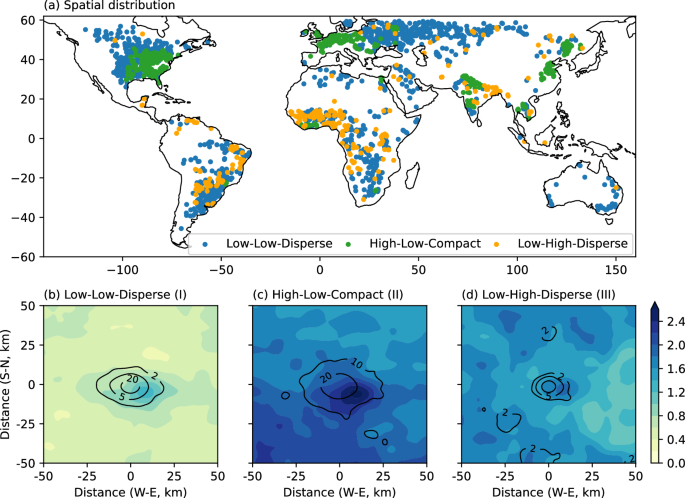
Urbanization is increasingly recognized as a significant factor influencing local climates, particularly through mechanisms such as the urban heat island effect, altered precipitation patterns, and changes in natural ecosystems. This report synthesizes insights from recent studies examining the multifaceted impacts of urbanization on local climates.
Urban Heat Island Effect

One of the most notable consequences of urbanization is the urban heat island (UHI) effect, where urban areas exhibit higher temperatures than their rural surroundings. This phenomenon is attributed to the replacement of natural vegetation with buildings, roads, and other infrastructure that absorb and retain heat. According to a systematic review, urbanization was found to significantly elevate local temperatures, with some studies indicating temperature increases of up to 5 °C in urbanized regions, particularly in the northeastern United States[5]. The UHI effect is exacerbated by climate change, as rising global temperatures compound the heat retention characteristics of urban settings[5].
Changes in Precipitation Patterns

Urban areas not only affect temperature but also influence precipitation patterns. A comprehensive analysis highlighted that urbanization can modify rainfall by enhancing precipitation both downwind and over the city itself. Studies indicated an average increase of about 18% in precipitation downwind of urban areas and a 16% increase directly over urban centers[3]. These alterations are driven by various factors, including urban heat and aerosol contributions, which influence cloud formation and storm dynamics. The interaction between these factors can lead to increased storm intensity and frequency in urbanized regions.
Additionally, while urban areas can enhance rainfall intensity in some instances, they can also disrupt natural rainfall distribution. The synthesis of multiple studies pointed out that the strongest precipitation effects were typically noted 20–50 km downwind of urban centers, often affecting adjacent rural areas, which can lead to increased flooding risks in those regions[3][5]. The variability in precipitation changes—both enhancement and suppression—highlights the complexity of urban-environment interactions.
Biodiversity and Ecosystem Impact

Urbanization exerts profound effects on local ecosystems and biodiversity. As cities expand, the fragmentation of natural habitats intensifies, leading to biodiversity loss. The Intergovernmental Panel on Climate Change (IPCC) has noted that urban areas collectively contributed approximately three-quarters of carbon dioxide equivalent emissions in 2020, further complicating environmental health globally[6]. This urban growth can displace wildlife, alter habitats, and contribute to increased risks from fires, pests, and diseases, stemming from habitat fragmentation and loss[6].
Moreover, the artificial landscapes created by urbanization can disrupt existing ecological balances, making it critical to consider ecological health in urban planning and policies aimed at climate adaptation[6]. The cumulative impacts of urban expansion may redefine landscape dynamics, leading to ecosystems that are less resilient to climate-induced stressors.
Forward-Looking Perspectives
In light of the significant challenges posed by urbanization in the context of climate change, researchers are advocating for improved collaboration between climate science and urban planning. The establishment of advisories that integrate scientific knowledge with urban management is crucial for developing effective strategies to address the growing environmental challenges posed by urbanization[6]. The integration of climate and urban studies can pave the way for innovative solutions that promote urban resilience and sustainability[6].
Conclusion
Urbanization profoundly influences local climates through mechanisms such as the urban heat island effect and altered precipitation patterns, leading to notable temperature increases and changes in hydrological dynamics. Additionally, the implications for biodiversity and local ecosystems cannot be overlooked, as urban expansion disrupts natural habitats and leads to conservation challenges. Addressing these issues requires a coordinated approach between urban development and climate science, ensuring that future cities are equipped to combat the adverse effects of climate change while sustaining environmental health.
Get more accurate answers with Super Pandi, upload files, personalized discovery feed, save searches and contribute to the PandiPedia.
Let's look at alternatives:
- Modify the query.
- Start a new thread.
- Remove sources (if manually added).